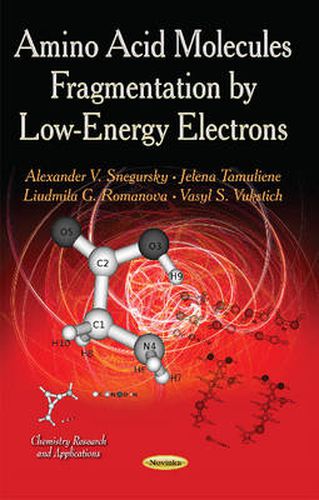Readings Newsletter
Become a Readings Member to make your shopping experience even easier.
Sign in or sign up for free!
You’re not far away from qualifying for FREE standard shipping within Australia
You’ve qualified for FREE standard shipping within Australia
The cart is loading…






Amino acids belong to biologically relevant organic substances involved in live organisms. Generally, they include the amine (NH2) and the carboxylic acid (COOH) functional groups. In general, their generic formula looks like H2NCHRCOOH, with R being an organic substituent (a side-chain ). As seen, their main constituents are carbon, hydrogen, oxygen and nitrogen atoms, however, other elements (say, sulphur) are also found in their side-chains. As of today, a dozens of amino acids are classified quite differently. From the structural viewpoint and according to locations of their functional groups, amino acids are commonly classified as the alpha-, ss-, gamma- and delta- ones. Being involved in forming proteins, amino acids are the second (after water) largest component of live tissues. Together with proteins, they play a significant role in a number of live organism-related processes (eg: neurotransmitter transport and biosynthesis).
$9.00 standard shipping within Australia
FREE standard shipping within Australia for orders over $100.00
Express & International shipping calculated at checkout
Amino acids belong to biologically relevant organic substances involved in live organisms. Generally, they include the amine (NH2) and the carboxylic acid (COOH) functional groups. In general, their generic formula looks like H2NCHRCOOH, with R being an organic substituent (a side-chain ). As seen, their main constituents are carbon, hydrogen, oxygen and nitrogen atoms, however, other elements (say, sulphur) are also found in their side-chains. As of today, a dozens of amino acids are classified quite differently. From the structural viewpoint and according to locations of their functional groups, amino acids are commonly classified as the alpha-, ss-, gamma- and delta- ones. Being involved in forming proteins, amino acids are the second (after water) largest component of live tissues. Together with proteins, they play a significant role in a number of live organism-related processes (eg: neurotransmitter transport and biosynthesis).